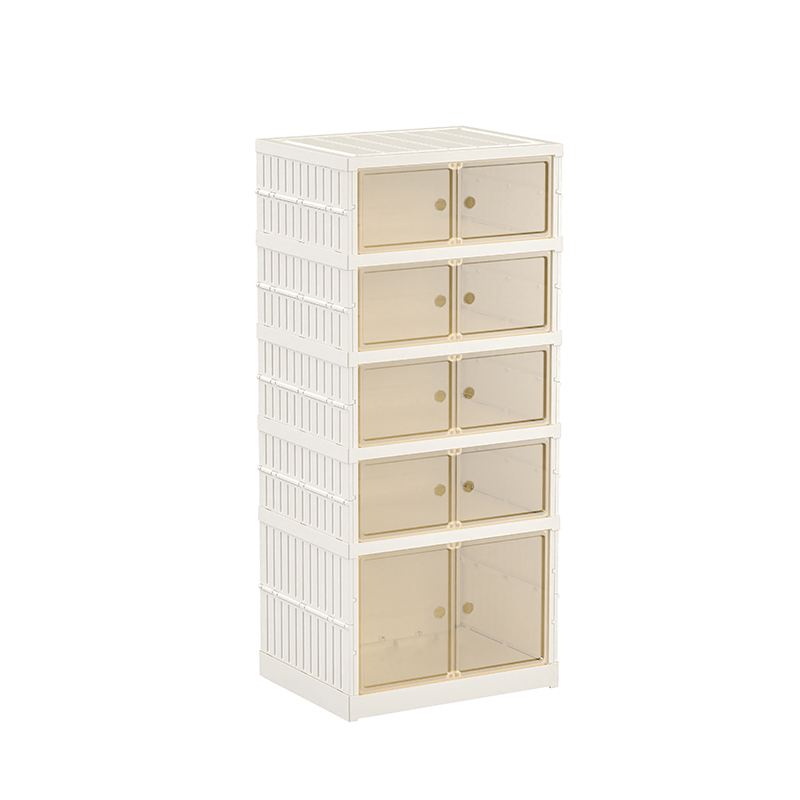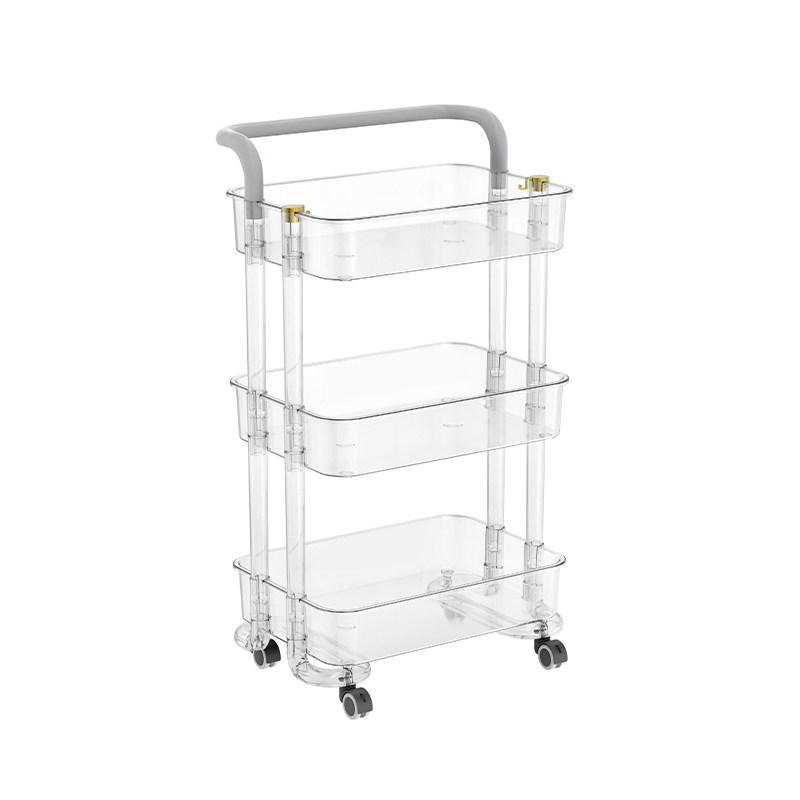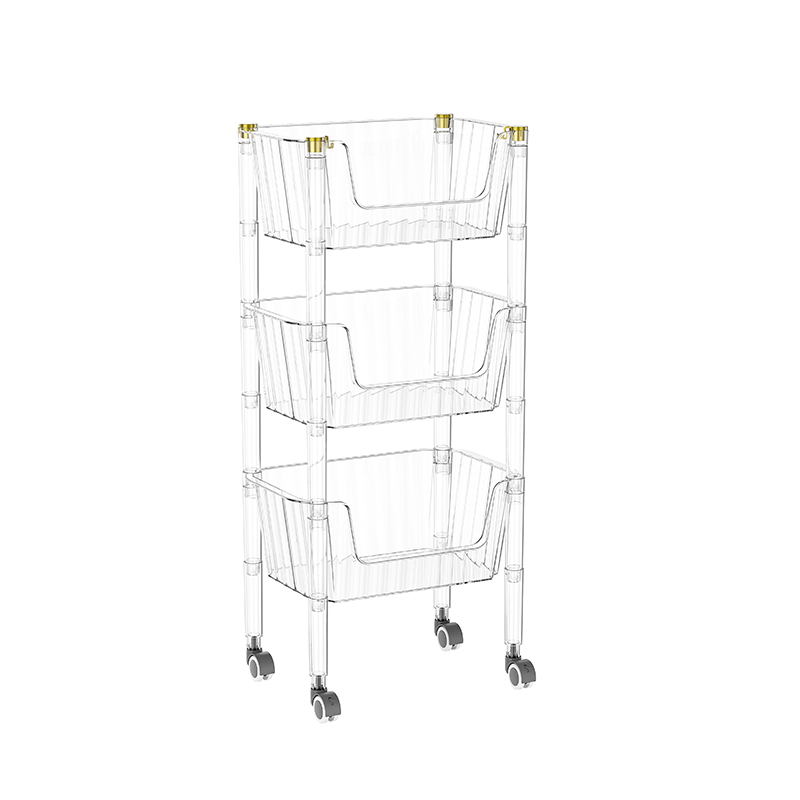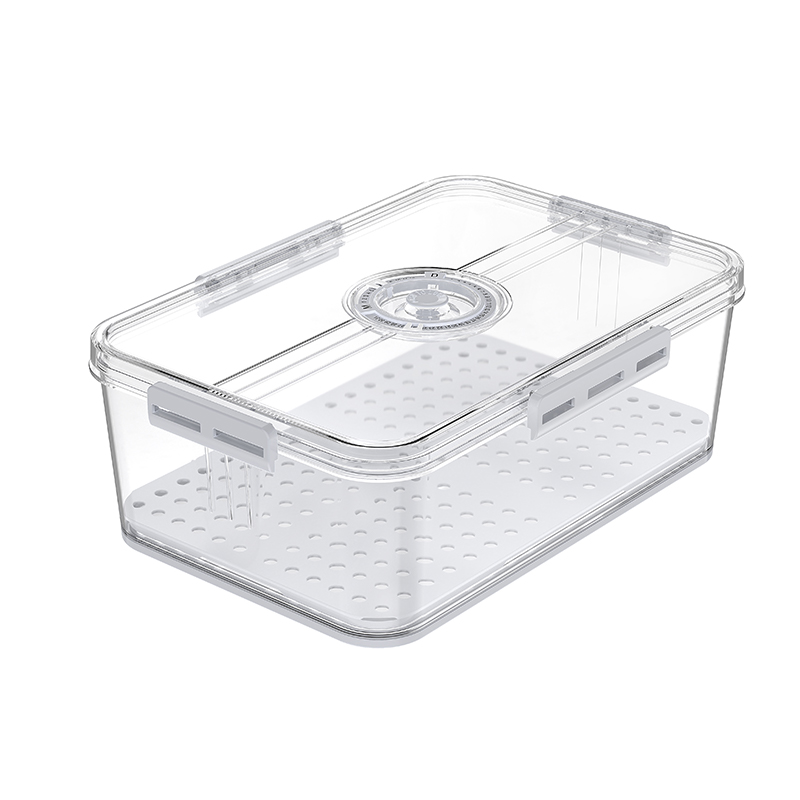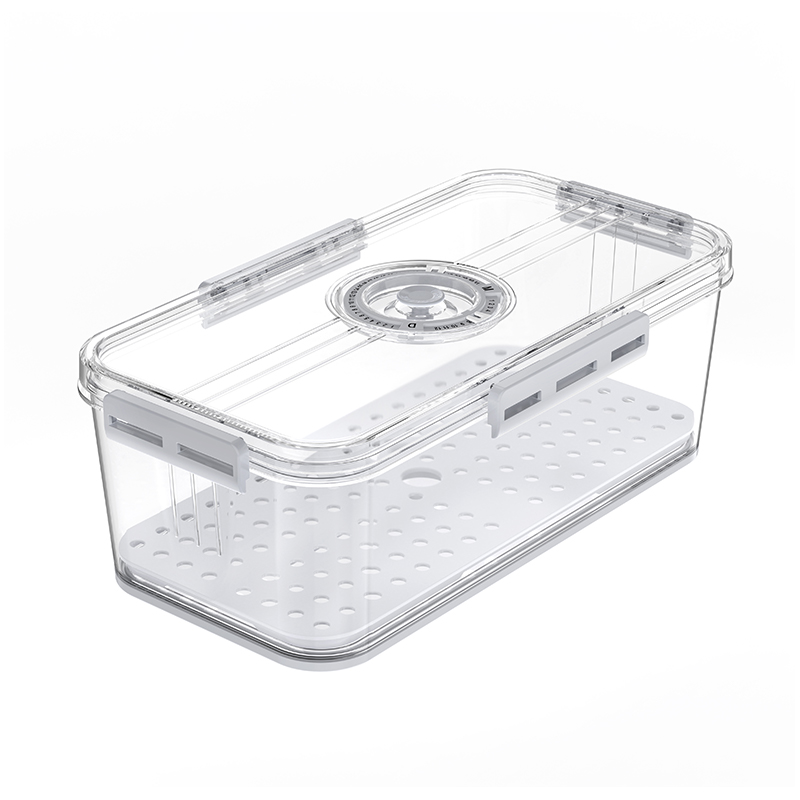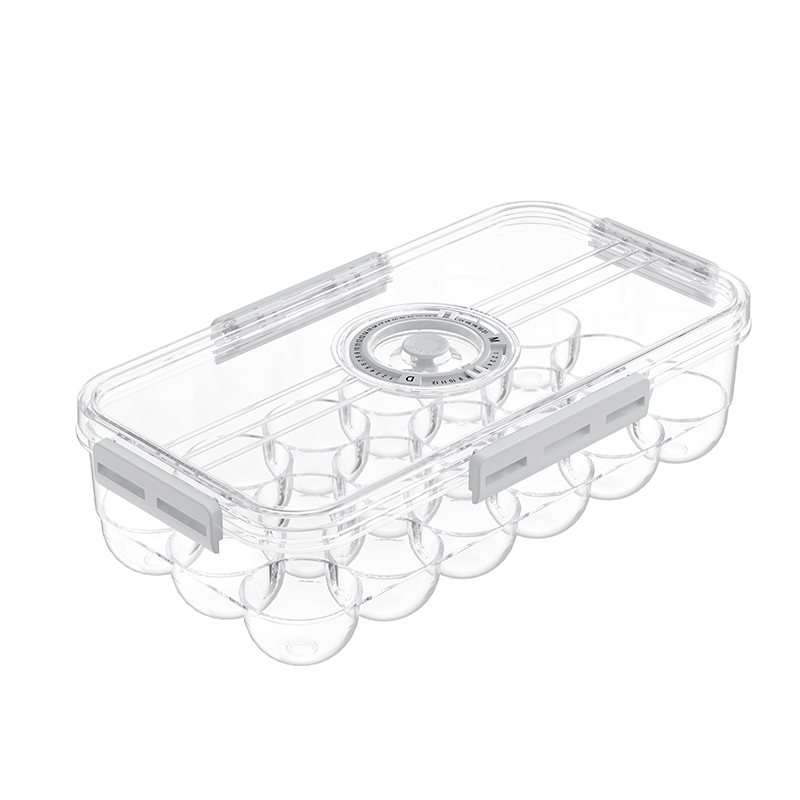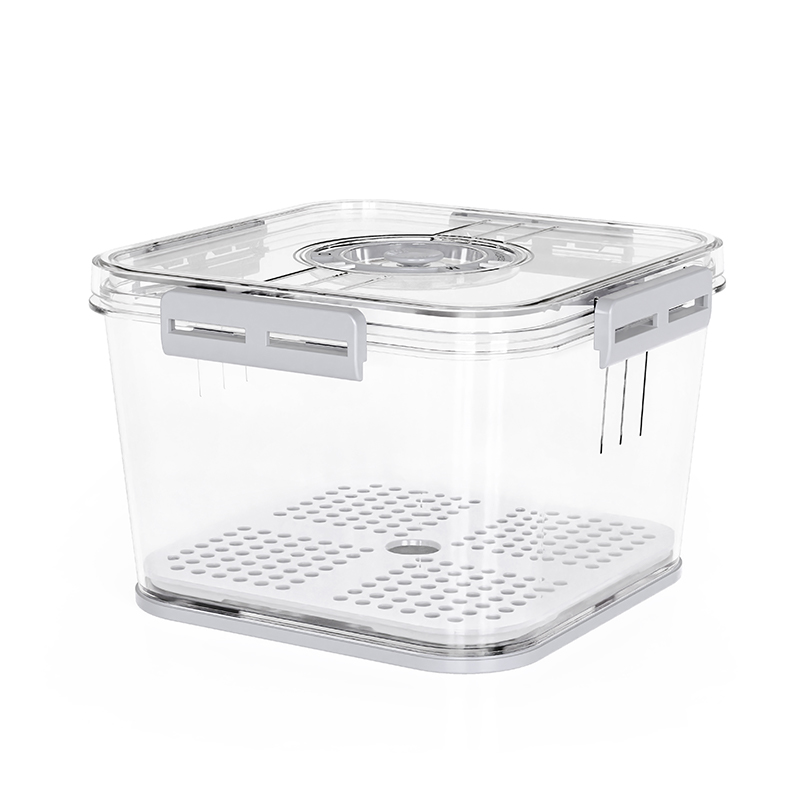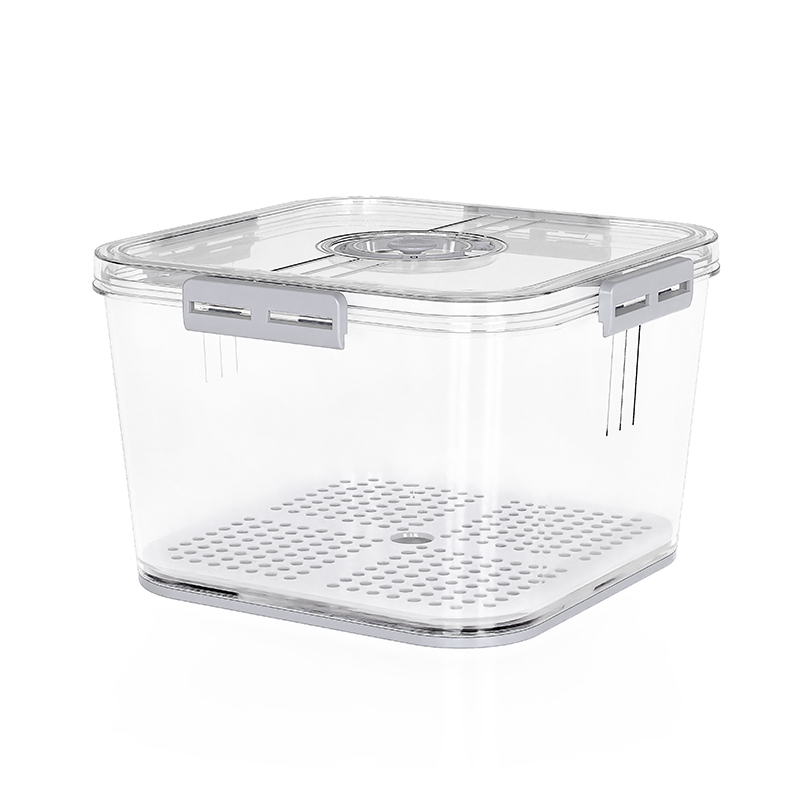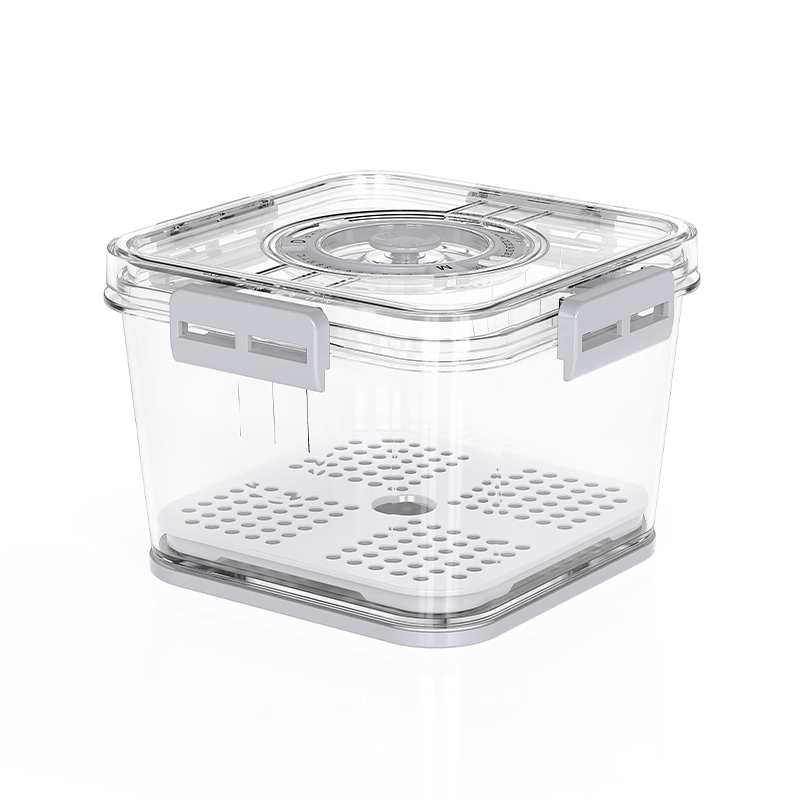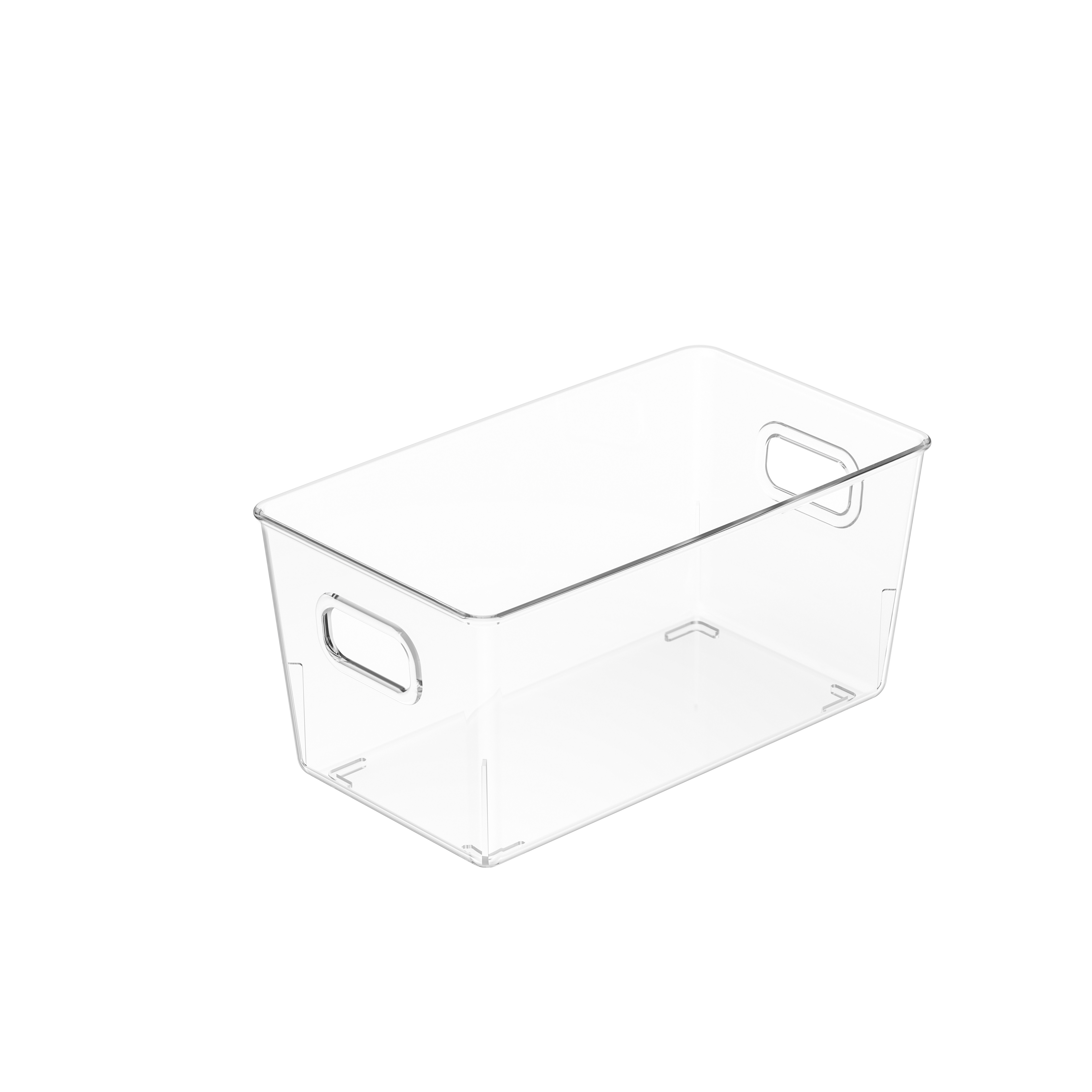The performance of a stackable PET fridge food storage box in terms of keeping food fresh compared to other storage options can be evaluated based on several factors:
An airtight seal is essential for preventing the entry of air and the escape of moisture, both of which are critical factors in food spoilage. Stackable PET fridge food storage boxes typically feature robust lid mechanisms, such as snap-on, lock-and-lock, or gasket seals that ensure a tight closure. This sealing mechanism helps to maintain a controlled environment within the container, significantly reducing oxidation processes that can lead to spoilage and nutrient loss. By maintaining consistent humidity levels inside the box, the airtight seal also helps prevent food from drying out, thus preserving its texture and flavor for a longer period.
Polyethylene Terephthalate (PET) is widely recognized for its superior barrier properties. Unlike other plastics, PET provides an effective barrier against oxygen and carbon dioxide, which can cause food to spoil quickly. Its high moisture barrier properties help in maintaining the freshness of both wet and dry food items. PET's resistance to chemical reactions ensures that it does not interact with food, thereby preventing any alteration in taste, odor, or nutritional value. This makes PET containers particularly suitable for a variety of food items, ranging from fresh produce and dairy products to dry snacks and cooked meals.
PET's resistance to odors and stains is a critical feature for food storage containers. This resistance is due to PET’s non-porous surface, which does not allow food particles, odors, or colors to permeate. As a result, even after storing pungent foods such as onions or curries, the containers can be cleaned to a pristine condition without retaining any residual smell or color. This property ensures that new food stored in these containers does not acquire unwanted flavors from previously stored items, maintaining its original taste and quality.
The high level of transparency offered by PET containers is more than just an aesthetic feature; it serves a practical purpose. Being able to see the contents at a glance reduces the need to open the container frequently, which can expose food to air and potential contaminants. This transparency also aids in better inventory management, allowing users to quickly identify what’s inside and reduce the likelihood of food wastage by ensuring older items are used first. Clear visibility of food items can encourage healthier eating habits by making nutritious options more accessible.
PET containers are designed to withstand a range of temperatures, making them versatile for different storage needs. They can endure the cold temperatures of a freezer without becoming brittle or cracking, which is crucial for long-term storage of foods like meats and frozen meals. In the refrigerator, PET containers maintain their integrity and do not warp or degrade, ensuring consistent performance. While PET is not typically recommended for high-temperature environments like microwaves (unless specifically designed for that purpose), its stability in cold and moderate temperatures makes it a reliable choice for food storage.
The stackable design of PET food storage boxes is engineered for optimal use of space in modern refrigerators. These containers are designed to nest securely on top of each other without slipping, which maximizes vertical space and helps organize the fridge efficiently. This is especially beneficial in smaller refrigerators or for households with significant food storage needs. Proper stacking prevents the crushing of delicate items like berries or leafy greens and ensures that all stored food receives adequate air circulation, reducing the chances of uneven cooling or spoiling.
The versatility of PET food storage boxes extends beyond their use in the refrigerator. They are equally effective in the freezer, providing a seamless transition for foods that need to be preserved at different stages, such as raw ingredients to prepared meals. This adaptability makes meal planning and preparation more convenient, as the same container can be used for storing leftovers, prepping meals ahead of time, or freezing seasonal produce for later use. The ability to use one type of container for multiple purposes simplifies kitchen logistics and reduces the need for multiple different storage solutions.

